Sash window secondary glazing is a second window or a frame inside your existing windows, typically using clear acrylic or low-emissivity (Low-E) glass. Sash windows are a common design in the UK due to their popularity in Britain’s Victorian and Georgian eras. They give properties a wonderful traditional appearance that many homeowners understandably don’t want to change or aren’t allowed to change original sash windows in listed properties.
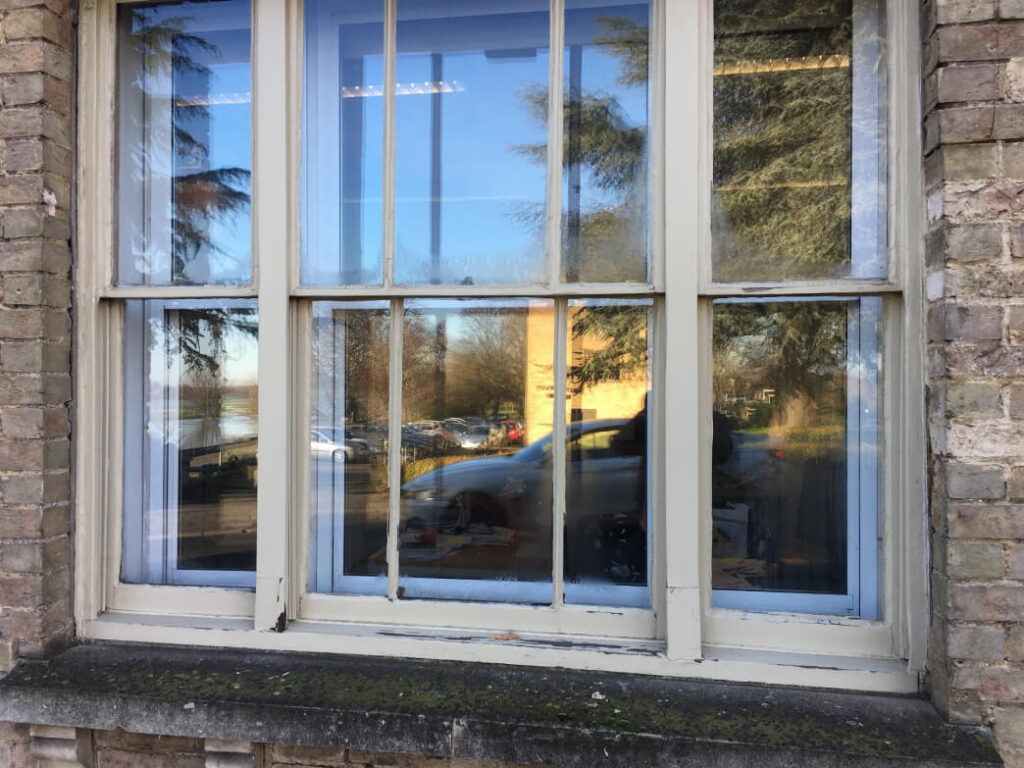

Unfortunately, sash windows aren’t perfect. One of their main shortcomings is that their frames were designed for single glazing, which was the only glass available at the time. Their sashes have narrow rebates, so standard double glazing is not compatible as it’s too thick. While single glazing offers a beautiful traditional appearance, it lacks the benefits of double and triple glazing, such as noise reduction, heat retention, and overall energy efficiency.
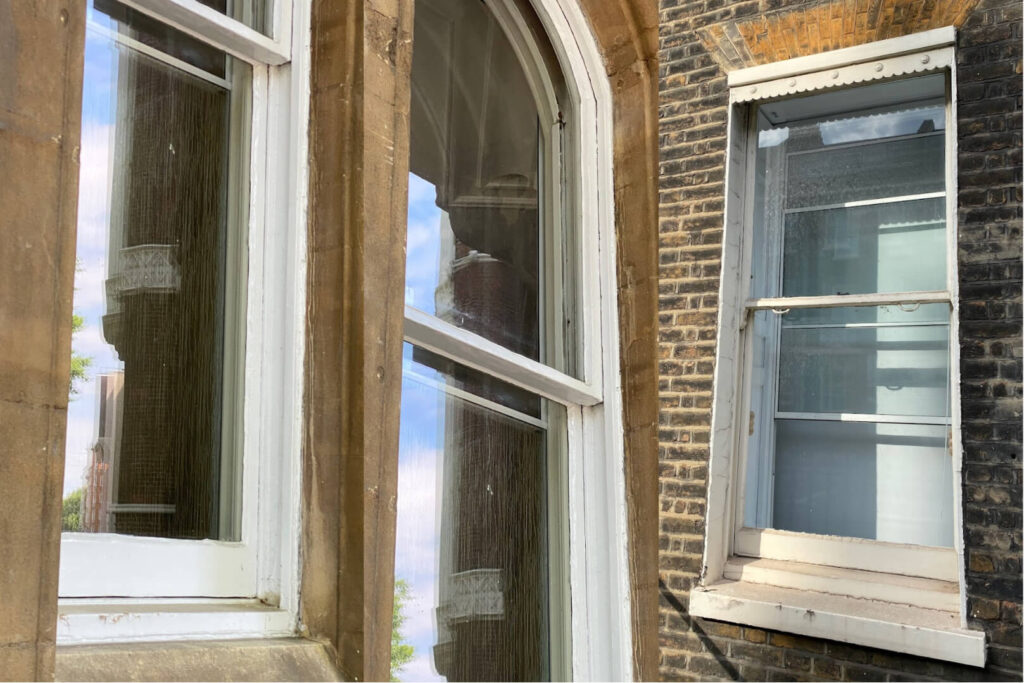
Sash window secondary glazing is a cost-effective way to obtain some of the benefits of double-glazing and add additional security while also retaining much of a sash window’s traditional charm.
As the name suggests, secondary glazing involves installing a secondary unit or panel to or around the pre-existing window; it’s a cost-effective choice that can sometimes be installed without professional help. Secondary glazing doesn’t offer as many benefits as advanced sash window double glazing options like Vacuum Double Glazing (more on that later), though it’s still a viable option for those wanting some of the benefits of double glazing from their sash windows.
Secondary glazing is available in a handful of different forms, from those homeowners can install themselves to those requiring professional assistance. As one would expect, each type has its own strengths and weaknesses.
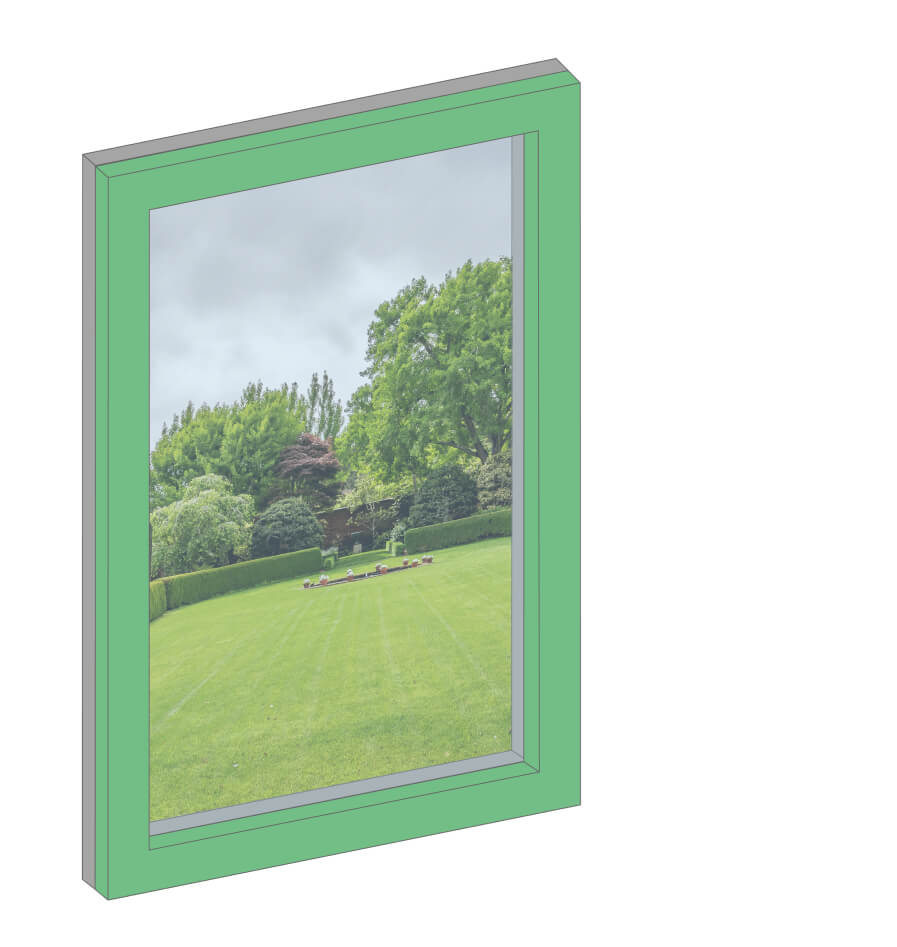
Fixed Inserts are perfect for those wanting a simple, DIY secondary glazing solution. Fixed Inserts are aluminium frame sections of glass that can be fitted around a window, either permanently or semi-permanently, to allow for cleaning and maintenance.
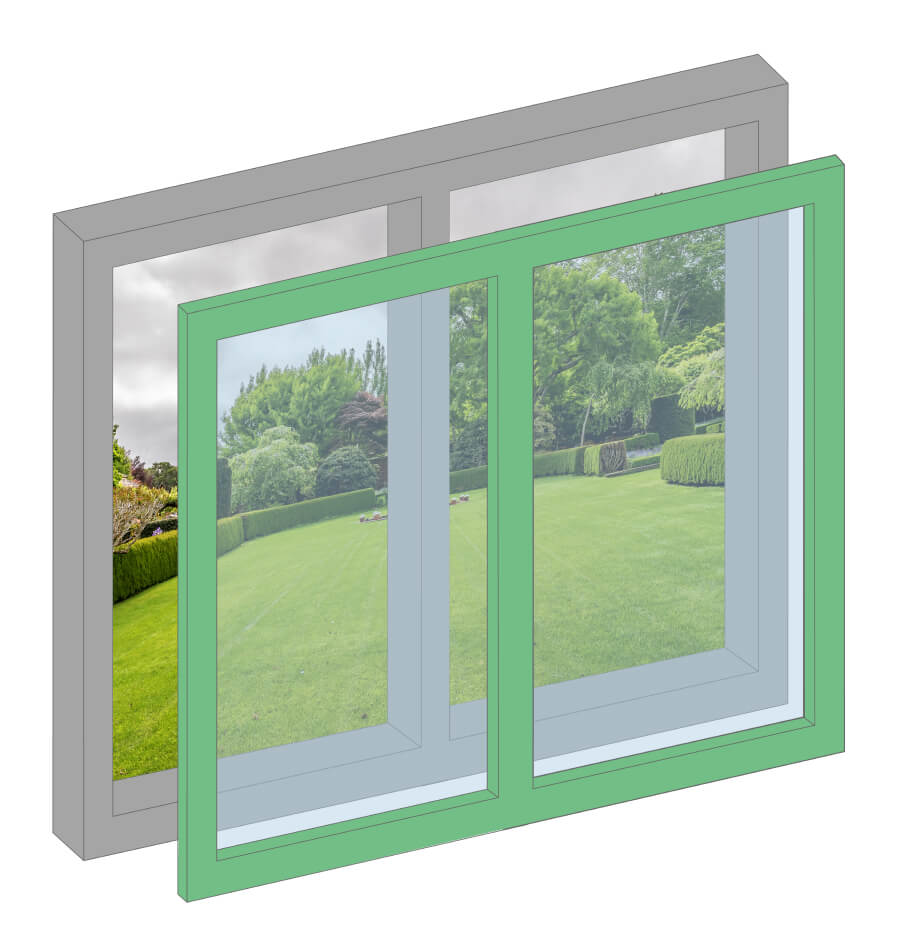
Horizontal Sliders are a popular choice as they are suitable for most buildings. Horizontal Sliders are designed to easily slide to one side, allowing the homeowner access to their original window for cleaning or ventilation. Horizontal Sliders are also available in a huge range of sizes and configurations, making them extremely versatile.
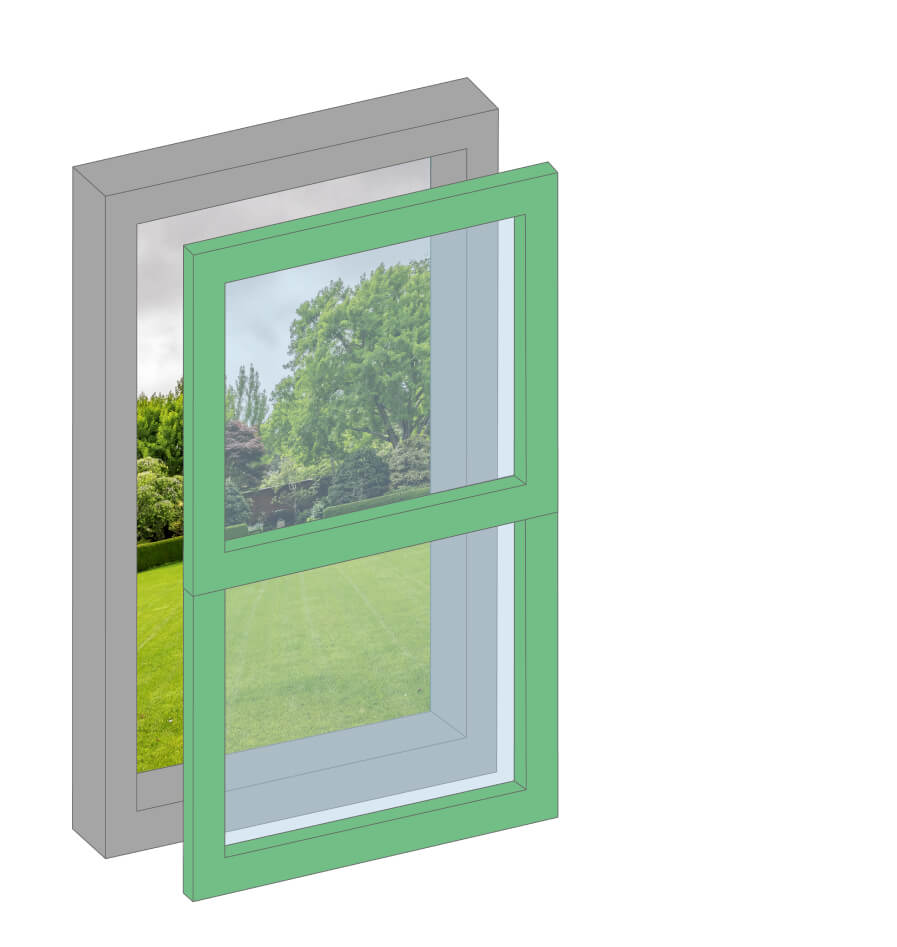
Vertical Sliders share many similarities with Horizontal Sliders. However, they are a great choice for secondary glazing sash windows, as they are designed to operate the same way. For this reason, Vertical Sliders are a popular choice for listed properties.
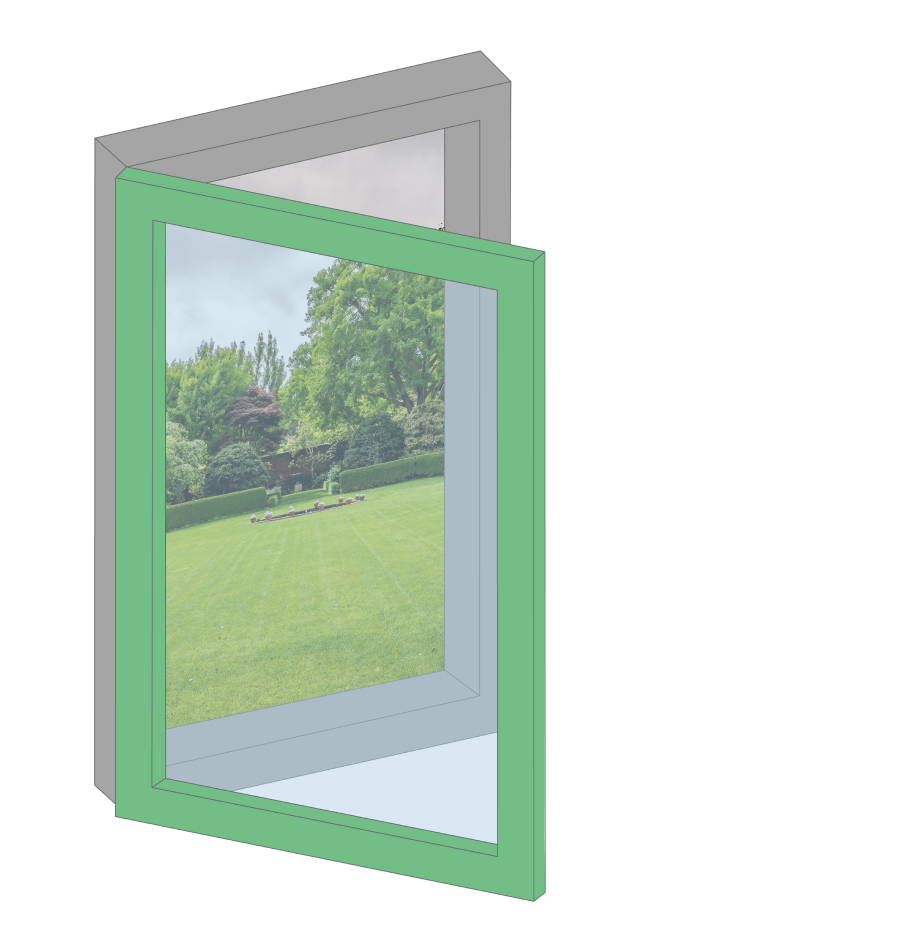
Hinged Casement secondary glazing is another popular choice for listed and heritage buildings, as they can be installed without transoms or mullions, ensuring that the property’s original windows aren’t obstructed or blocked.
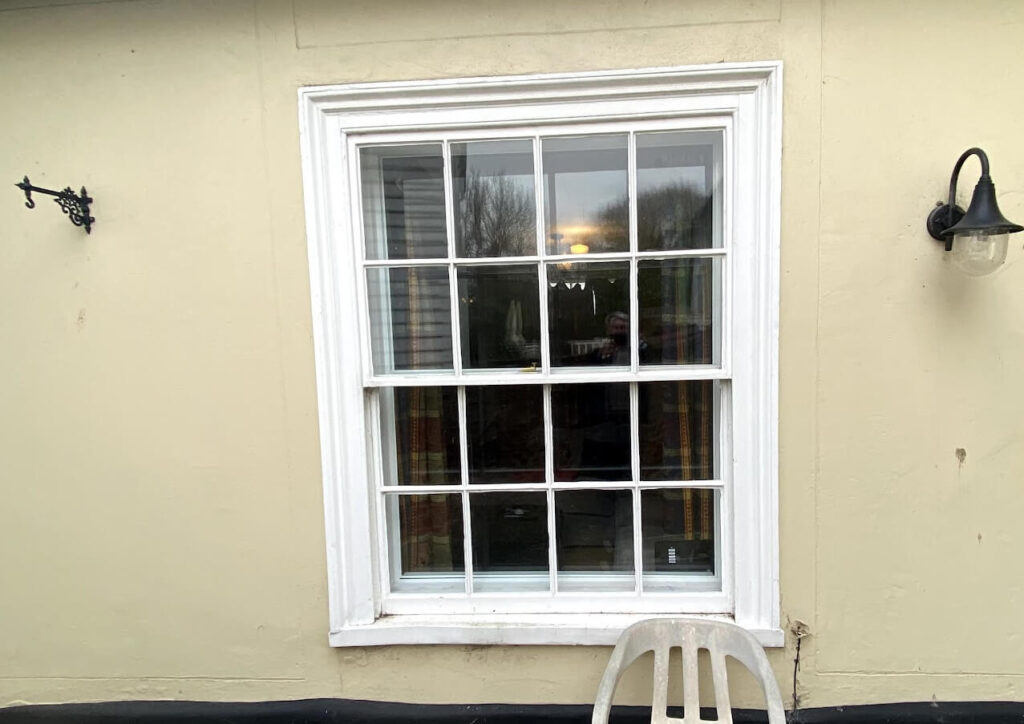
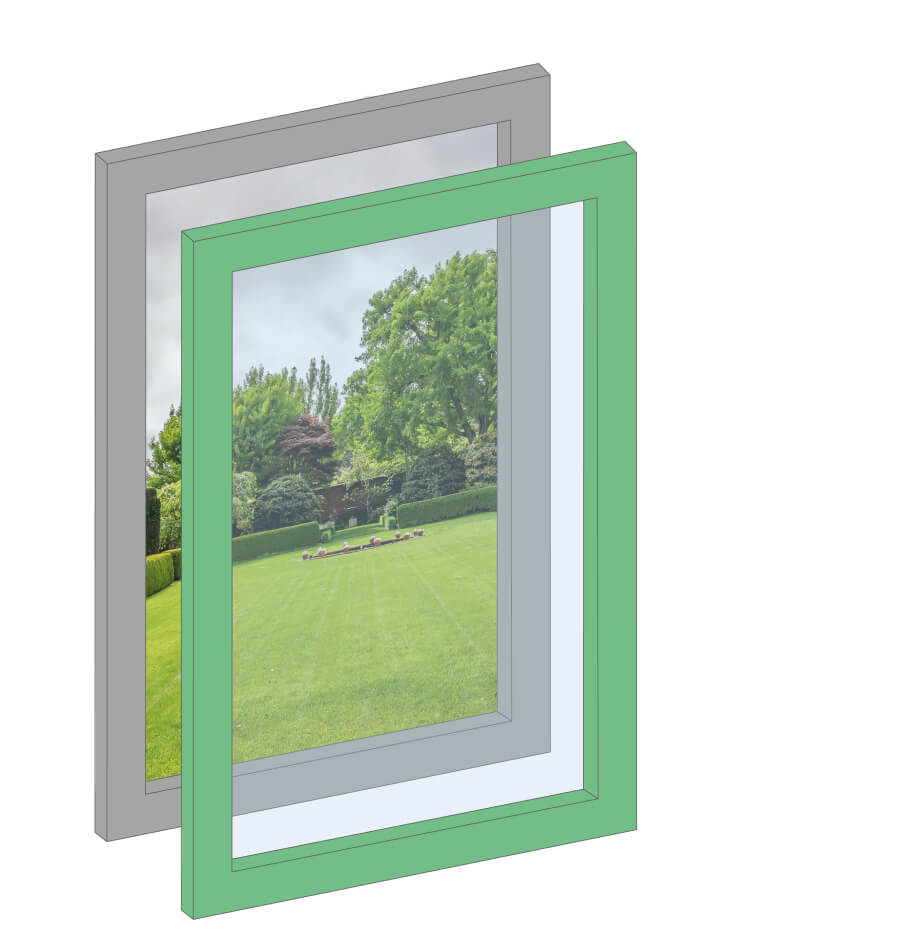
Lift Out Windows are a cost-effective option for those who don’t need frequent access to their original windows, as they are permanently fixed. As the name suggests, Lift Out Windows can be lifted out of the frame for cleaning and maintenance.

If none of the aforementioned options is suitable, then it is often possible to get a bespoke secondary glazing design to suit the precise needs of the homeowner and their property.
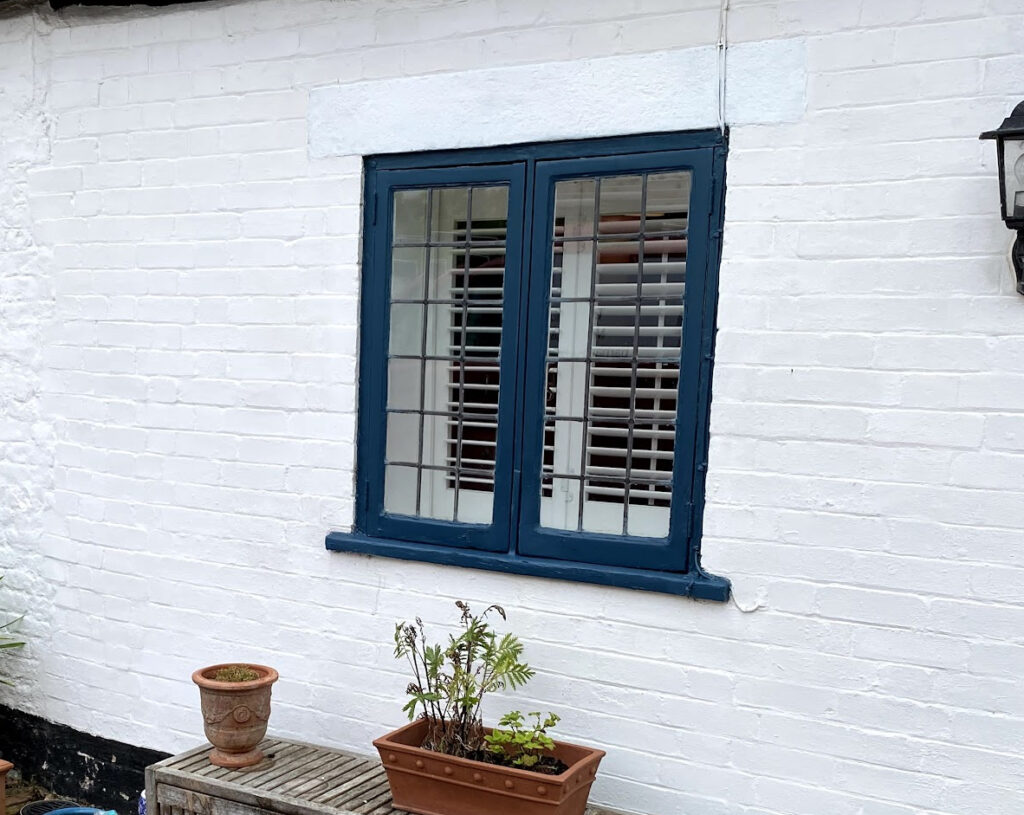
When looking into window replacement or retrofitting, thermal and acoustic properties are important factors to consider.
One of the key reasons why people get secondary glazing or replace their single-glazed windows with double glazing is the acoustic benefits. Single glazed windows are notoriously bad at preventing noise pollution, making them a nuisance for those living on a busy street.
Secondary glazing is great for removing unwanted outside noise, regardless of which secondary glazing choice homeowners pick.
Secondary glazing, on average, provides sound reduction of 31 dB and up to 54 dB, depending on the acoustic glass used.
The thermal benefits of secondary glazing are another one of their key selling points.
Secondary glazing works with the pre-existing window to retain heat, ensuring that properties are nice and warm in the winter and energy bills don’t get too high.
Secondary glazing average U-Value is approximately 2.7W/(m²K).
Although secondary glazing is a good budget alternative to single glazing, it pales compared to double glazed sash windows with vacuum glass.
Sash window double glazing fitting service lets homeowners with original sash windows enjoy all the benefits of double glazings, such as external noise reduction, energy efficiency, and heat retention, without losing the traditional charm of their property.

It’s not just double glazing benefits that homeowners can enjoy with Vacuum Double Glazing, as the state-of-the-art vacuum-sealed technology provides the same thermal benefits for original timber windows as triple glazing.
For this reason, properties with vacuum double glazing are extremely energy-efficient, helping property owners keep their energy bills down.
As mentioned before, vacuum double glazing is a great choice for retrofitting sash windows, as the glass is narrow enough for the mechanism to still function as intended and discrete enough to ensure that the property doesn’t lose its traditional beauty.
This is all thanks to modern FINEO glass, which is lightweight and thin at just 7 mm. On the other hand, secondary glazing can often look bulky and reduce the sash window’s functionality from both the inside and outside.
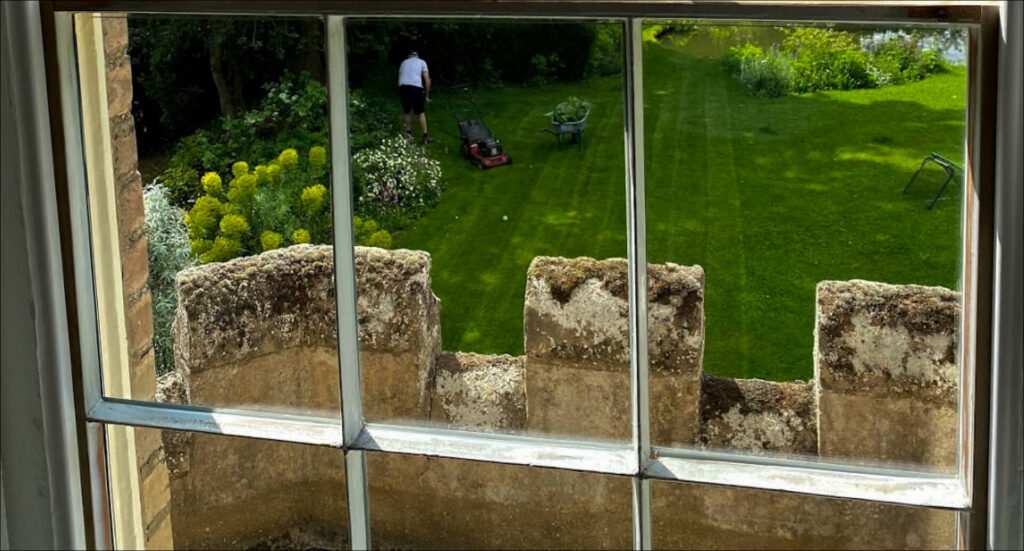
Vacuum double glazing is a possibility for Grade 2 listed buildings, though permission is required first. This has made it hugely popular with homeowners living in such properties, as many Grade 2 listed properties can finally enjoy the benefits of double and even triple glazing without losing their traditional sash windows charm.
Secondary glazing is also an option for Grade 2 listed properties. However, due to how the many different shapes and sizes that secondary glazing can be, it’s always worth speaking to the relevant local authorities before making any changes to the property.
Both options are far easier to get permission for than full window replacement.
Yes, secondary glazing can add value to a property. Secondary glazing improves energy efficiency and heat retention while also reducing noise pollution. These are all important factors of a home that people look for when purchasing a property, hence the increase in value.
Yes. With state-of-the-art vacuum double glazing technology, sash windows can now be double-glazed.
Double glazing sash windows used to be impossible due to how thick double glazing once was, as it was too heavy for the sash to be operational. But now, thanks to 6.7mm FINEO glass, properties with sash windows can finally enjoy the benefits of double glazing.
Yes. It’s not just sash windows that can be double glazed, as vacuum double glazing is suitable in a wide variety of different frames.
A window’s U-value measures its thermal efficiency — the lower a window’s U-value is, the longer it takes for heat to pass through. As such, windows with low U-values are great for keeping the house nice and warm while also ensuring that energy bills stay as low as possible.
Due to how many different types of secondary glazing there are, their U-Values can vary. Generally speaking, though, secondary glazing offers an average U-Value of approximately 2.7W/(m²K).
Vacuum Double Glazing, on the other hand, has an average U-Value of just 0.7W/(m²K), which is comparable to triple-glazing.
Yes. This makes secondary glazing a popular option for those living on a busy street, as single glazing is notoriously poor at reducing noise population.